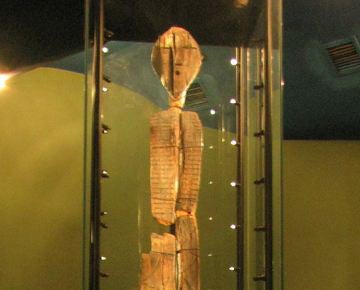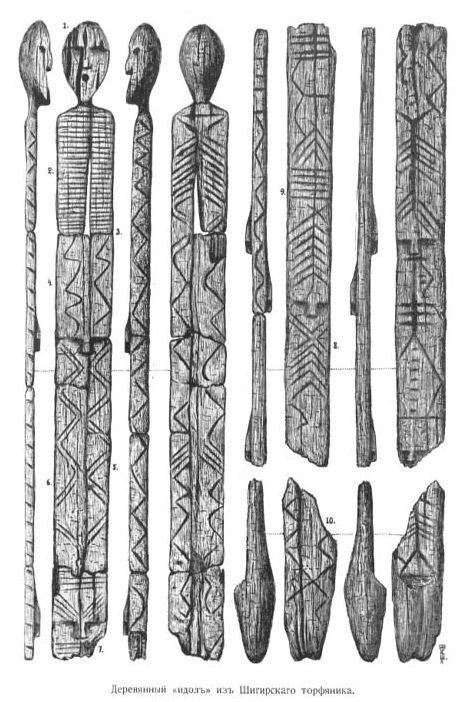Mysterious wooden statue found in peat bog is 'twice as old as Stonehenge'
Scientists now think the Shigir Idol, found in Siberia more than a century ago, is the world's oldest wooden sculpture

Your support helps us to tell the story
From reproductive rights to climate change to Big Tech, The Independent is on the ground when the story is developing. Whether it's investigating the financials of Elon Musk's pro-Trump PAC or producing our latest documentary, 'The A Word', which shines a light on the American women fighting for reproductive rights, we know how important it is to parse out the facts from the messaging.
At such a critical moment in US history, we need reporters on the ground. Your donation allows us to keep sending journalists to speak to both sides of the story.
The Independent is trusted by Americans across the entire political spectrum. And unlike many other quality news outlets, we choose not to lock Americans out of our reporting and analysis with paywalls. We believe quality journalism should be available to everyone, paid for by those who can afford it.
Your support makes all the difference.A wooden statue pulled from a peat bog in Russia more than a hundred years ago is now believed to be twice as old as Stonehenge.
The Shigir Idol, which found in the Ural Mountains in 1890, is thought to be 11,000 years old - making it the oldest wooden sculpture in the world.
Depicting a man with mysterious symbols inscribed on him - which scientists believe could be an ancient encrypted code - the statue is 1,500 years older than previously thought.
Scientists in Mannheim, Germany, used the most up-to-date carbon dating technology, called Accelerated Mass Spectrometry, to determine the statue’s age.

Thomas Terberger, a professor at the Department of Cultural Heritage of Lower Saxony, part of the team who dated the Idol, told the Siberian Times: “The results exceeded our expectations.
“This is an extremely important date for the international scientific community. It is important for understanding the development of civilisation and the art of Eurasia and humanity as a whole.
“We can say that in those times, 11,000 years ago, the hunters, fishermen and gatherers of the Urals were no less developed than the farmers of the Middle East.”
A source at the Sverdlovsk History Museum in Yekaterinburg, Russia, where the statue is currently on display, told the Siberian Times: “The first attempt to date the idol was made 107 years after its discovery, in 1997.
"The first radiocarbon analyses showed that idol was 9,500 calendar years old, which led to disputes in scientific society.
“To exclude doubts, and to make the results known and accepted, a decision was made to use the most modern technologies to date the Idol again.”
Scientists believe the complex runes cut into the wood are encoded information about the origins of the universe from the ancient sculptor.
The source called the sculpture “a key to understanding Eurasian art.”
The statue was originally 5.3 metres tall but parts of it went missing during the Soviet Era. Now only 2.8 metres remain along with sketches drawn in 1914 by a famous local archaeologist, Vladimir Tolmachev.
Join our commenting forum
Join thought-provoking conversations, follow other Independent readers and see their replies
Comments